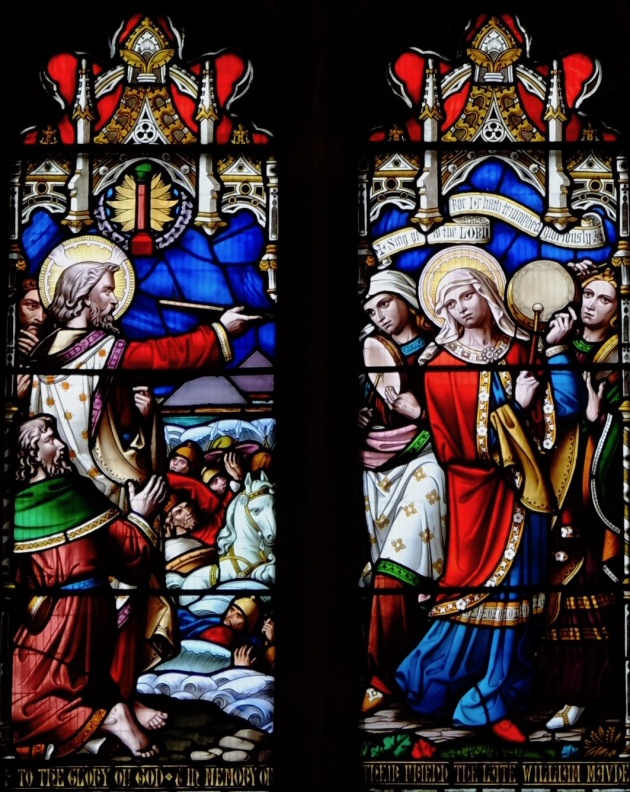Stunning stained glass
Whilst St Mary's upper clerestory windows flood the building with light, the story of our Christian faith and the parishioners who have shared in it is displayed in a feast of stained glass around the entire church.
Stained glass –
St Mary’s contains a wealth of stunning Victorian stained glass, including a window by renowned stained glass artist Charles E Kempe. The chancel windows reflect the story of Holy Week, Easter and the Forty Days until Ascension. Other windows reflect the work of faithful church workers, men and women of St Mary’s parish, living out their Christian faith in the community of Barnard Castle.
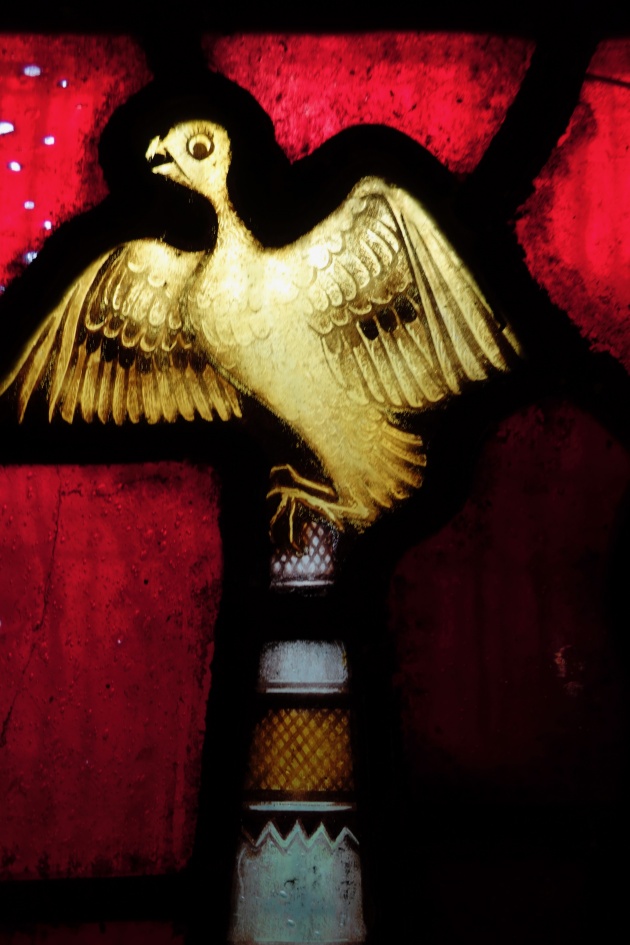
- Porch: this window depicts Jesus’s baptism by John the Baptist, with a dove descending, symbolic of the Holy Spirit; it also shows Jesus welcoming and blessing children. The theme of the window reflects that the font was installed in the tower porch when it was rebuilt in 1873-4.
Dated 1874, it is “In memory of Hannah Hesl[op?], who died May 1st 1874, aged 75 years.
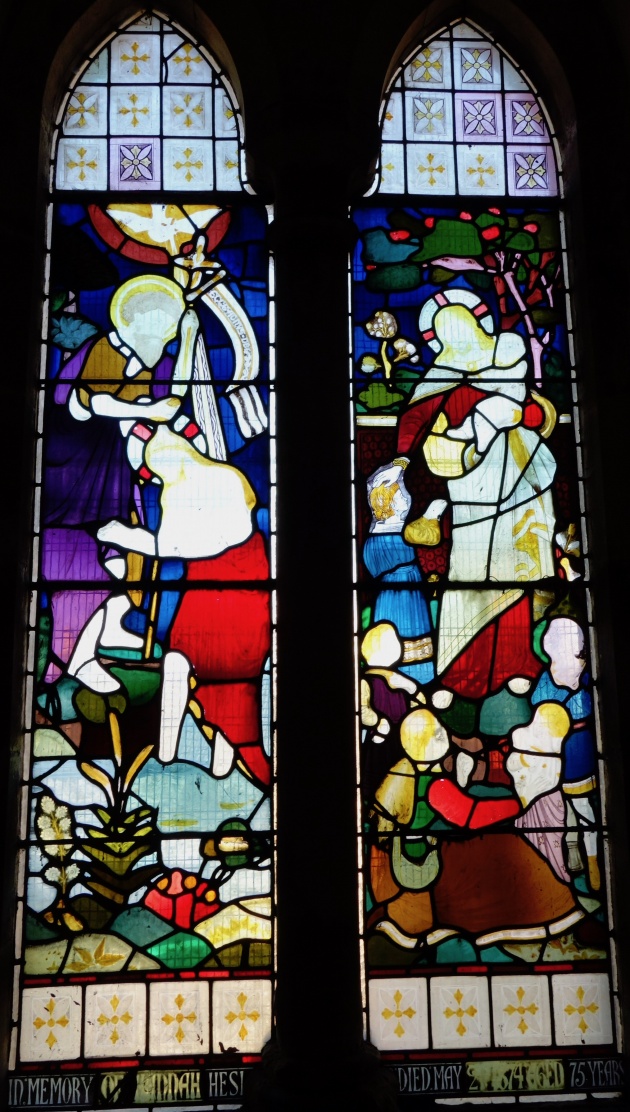
2. North Aisle: this window depicts Jesus’s “Parable of the talents” (Matthew 15:20-23).
Dated 1875, its script states, “Well done, good and/faithful servant; enter/thou into the joy of Thy Lord” and is dedicated to the memory of Ralph Dent, died 10th Jan 1872, who served as steward to John Bowes’ Streatlam estates.
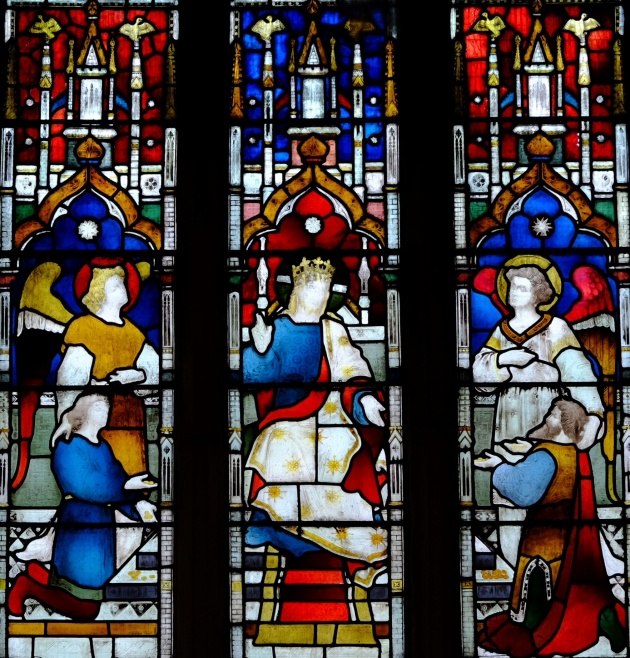
3. North Transept (north l.h.s.): in this window St Hilda of Whitby is sat teaching a group of devout women, with a bishop stood beside her. This may be Bishop Lightfoot of Durham who preached a famous sermon on St Hilda on 1885 – some of its text appears on four scrolls above and below the scene.
The window is dedicated “in loving memory/of Elizabeth Richardson and of Mary Alice her daughter who for 50 years was a Sunday School Teacher in this parish” and is dated 1912.
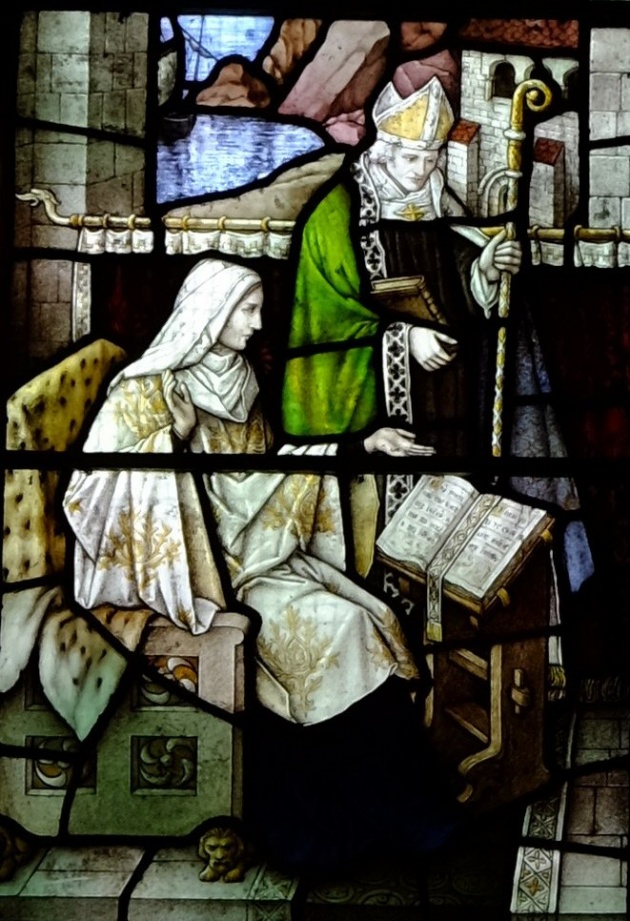
4. North Transept (north r.h.s): this window depicts the C7th north-eastern saints, St Aidan and St Oswald on the Northumbrian coast, with Bamburgh Castle and Lindisfarne behind, the Irish-speaking Aidan preaching and blessing the people, and King Oswald as his interpreter.
The window is in memory of Frank Callis “who fell asleep September 20th 1912, aged 47 years”. Callis was a local vicar’s son, who worked abroad for many years but semi-resident in town from the early 1900s.
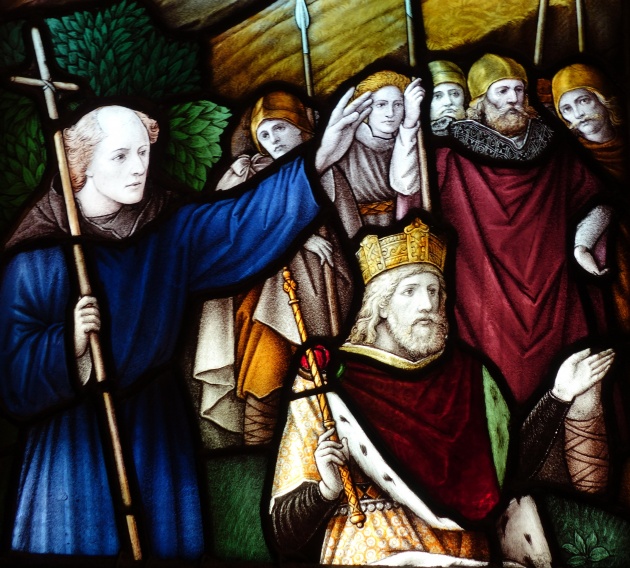
5. North Transept (east): Dated 1888, this window portrays Jesus’s “Parable of the Tares”. The Sower casts seed in the left-hand light, and on the right are two angels, one reaping, in a landscape of fruitful fields and trees.
The script beneath reads, “He that soweth the good seed is the Son of Man and the reapers are the angels”. It was given by Mrs Annie Mitchell in memory of her niece Ada Constance Cust, daughter of the town surgeon, who died aged only 16 in 1874.
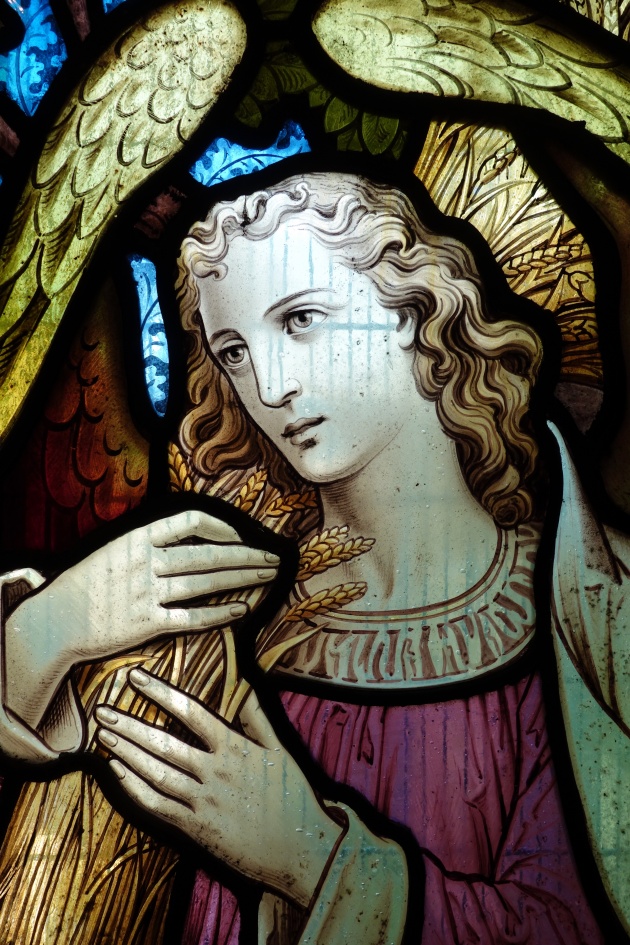
6. Chancel – north side: set in a canopied niche the stained glass shows Easter morning, with angels at the tomb, and the words, “touch me not for I am not yet ascended to my father”, as Jesus greets Mary Magdalene in the garden. The upper tracery shows the Holy Spirit descending as a dove.
The window was given in 1903, “To the Glory of God and in/loving memory/of Mary Watson/widow of William Watson of/Spring Lodge born 1824 died 1903”.
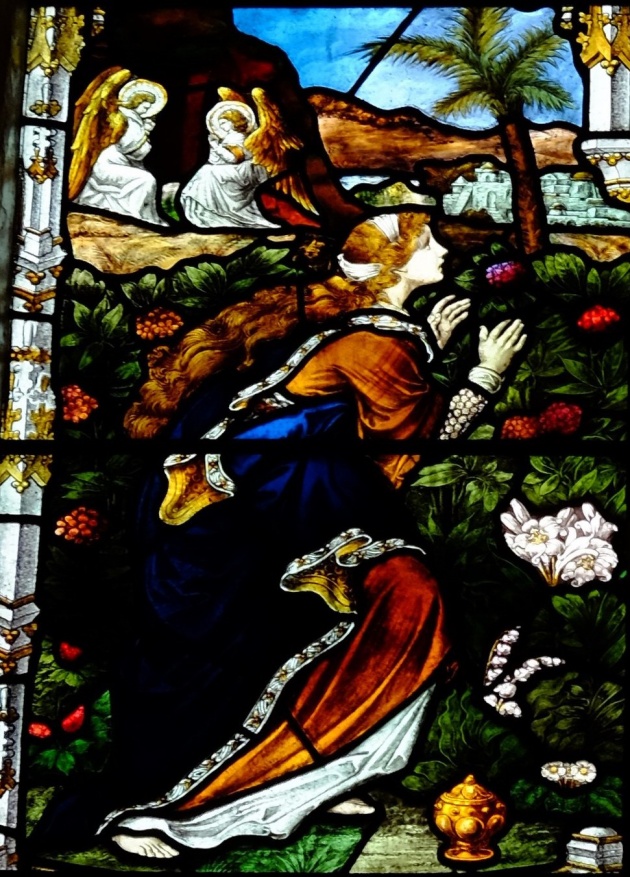
7. East Window: this window depicts the Ascension, Jesus departing the disciples 40 days after the Resurrection. Its dramatic countryside scene is set outside Jerusalem. A sunburst surrounds the figure of Jesus with a multitude of angel faces, and angel musicians in the tracery above.
A script states, “And it/came to pass while He blessed/them, He was parted/from them and carried up into/heaven” and angels with scrolls on left and right query, “Why stand ye gazing up into heaven?” “This same Jesus shall come in like manner”.
The window was given “in grateful commemoration of the ministry of the Rev. Frederick Brown M.A. late fellow of Trinity College Camb: hon. Canon of Durham; vicar 1865-1898”.
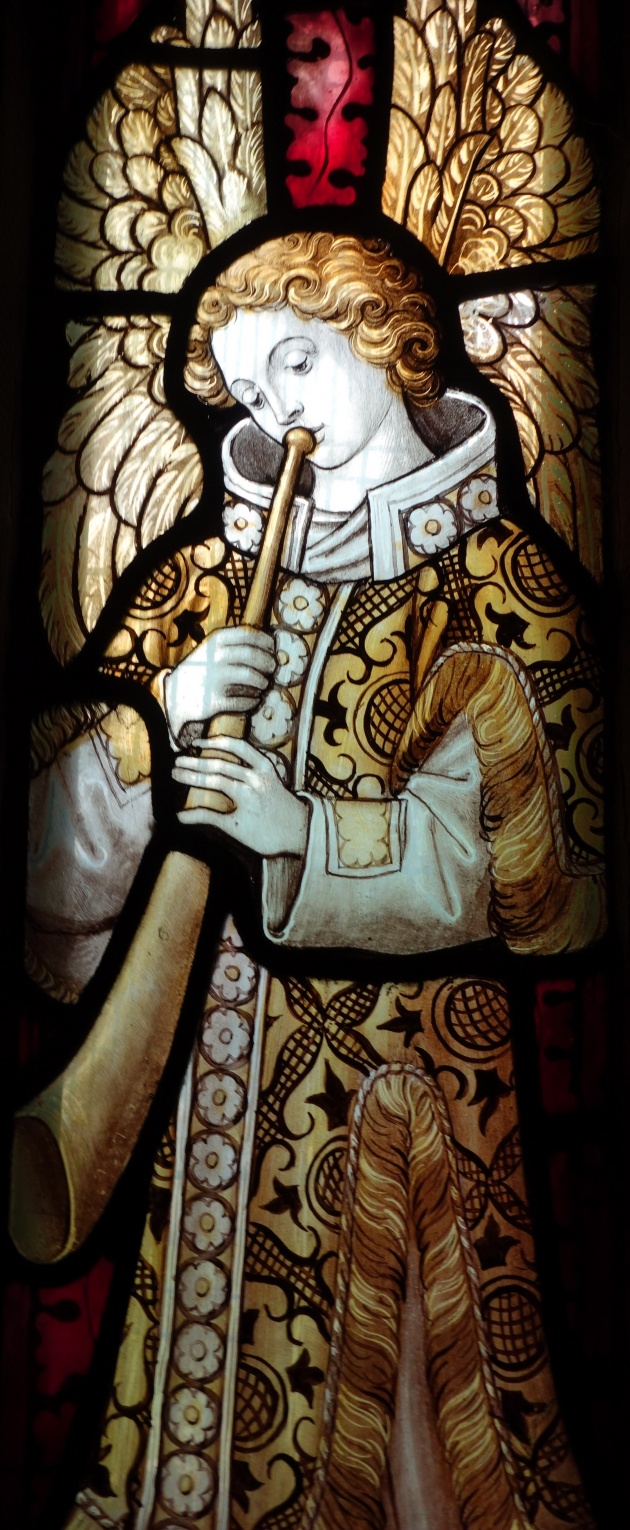
8. Chancel south (sanctuary): with the north side chancel glass, this window portrays further appearances of Jesus after the Resurrection
a) travellers on the road from Jerusalem to Emmaus, who meet Jesus.
b) Jesus shares a meal with them, breaking bread, and is recognised as the Risen Christ.
c) Mary Magdalene and other women, bringing ointment to the tomb, meet with angels who tell them that Jesus is risen. Script – “He suffered and was buried,/And the third day he rose again /according to the Scriptures”.
This 1899 window is “in memory/of William Watson of Thorngate House/Barnard Castle & Mary his wife 1891-1892”.
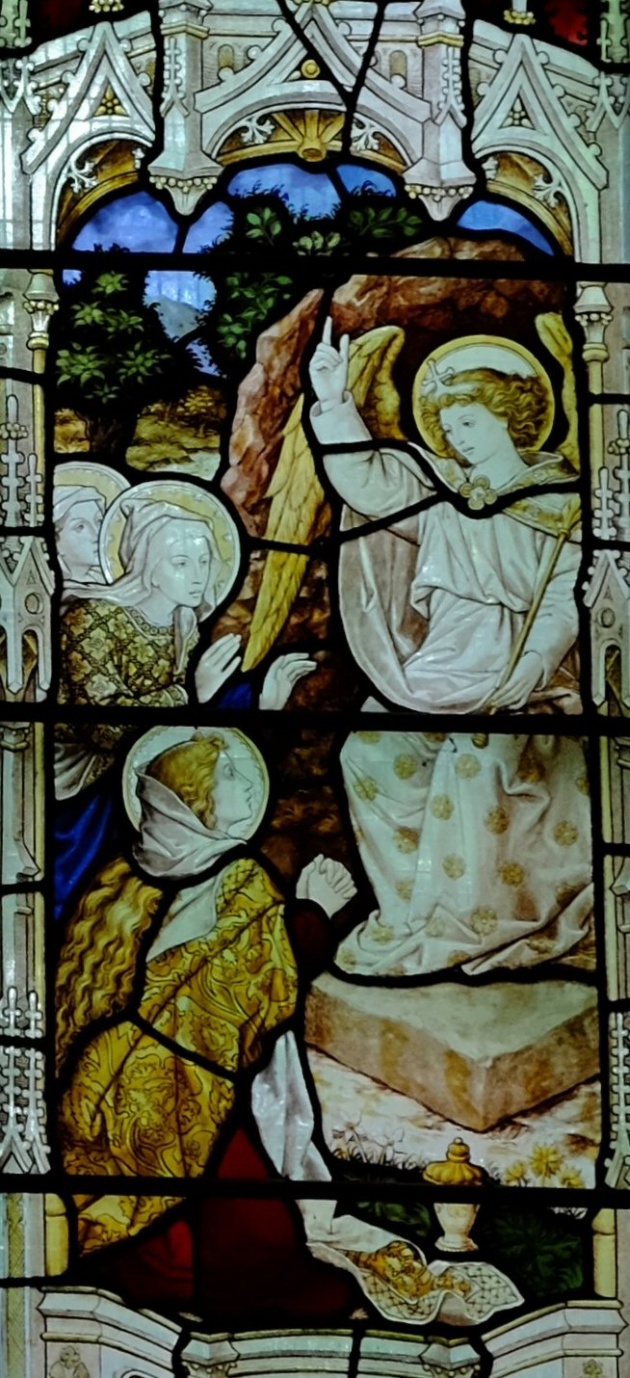
9. Chancel (south): Dated c. 1883-5 and created by the famous Victorian stained-glass artist, Charles E Kempe, this window shows the events of Maundy Thursday and Good Friday in Christ’s Passion:
- The Last Supper and washing of the disciples’ feet.
- Jesus praying in the garden of Gethsemane with the disciples before His arrest.
- Jesus on trial before Pilate.
Script across the three lights states, “We adore thee O Christ and bless thee/For by the Cross and Passion/Thou hast redeemed the world”. It was given in memory of William Watson, of Spring Lodge (Newgate), town solicitor, councillor and benefactor.
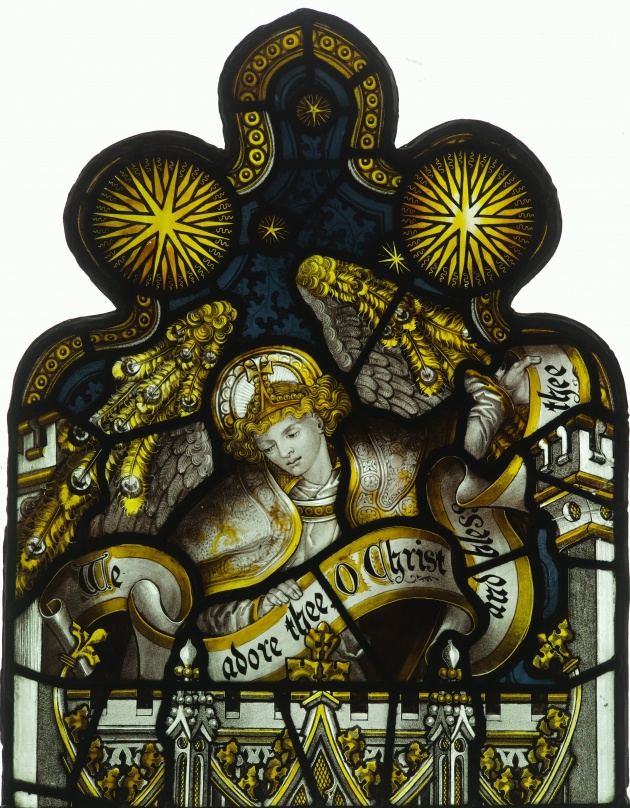
10. South Transept (east): The earliest window in St Mary’s, this depicts –
- Saint Peter (holding keys).
- Saint James the Great (with a pilgrim’s staff and water gourd).
- Saint Paul (carrying the sword of faith).
Dated 1852, the window is “To the memory of the Reverend/John Davidson who was minister of this chapel/32 years and died the 14th of July 1847”.
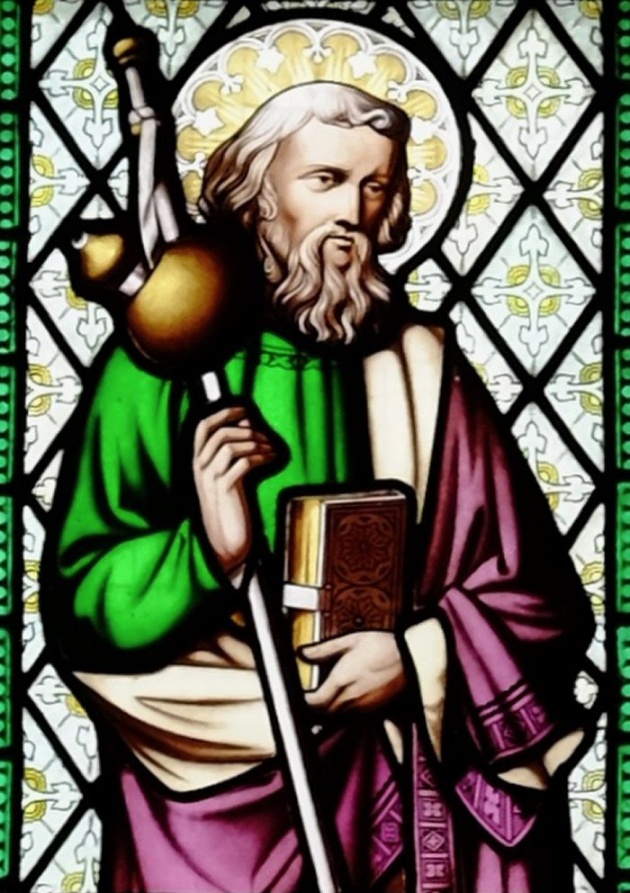
11. South Transept (south): possibly designed by George Joseph Baguley, this window was installed by public subscription in 1870, as a memorial to George Dugard, the vicar of St Mary’s who served Barnard Castle during the 1849 cholera epidemic, and who strongly promoted schools in the parish.
The window portrays Jesus’s pastoral injunction to his disciple Peter, “feed my sheep”; it also depicts the “parable of the Good Samaritan”, appearing to include a bishop as one of those ‘walking by on the other side’.
It was given “To the glory of God and in memory of Rev George Dugard and incumbent of this parish from 1847 until his death in 1865”.
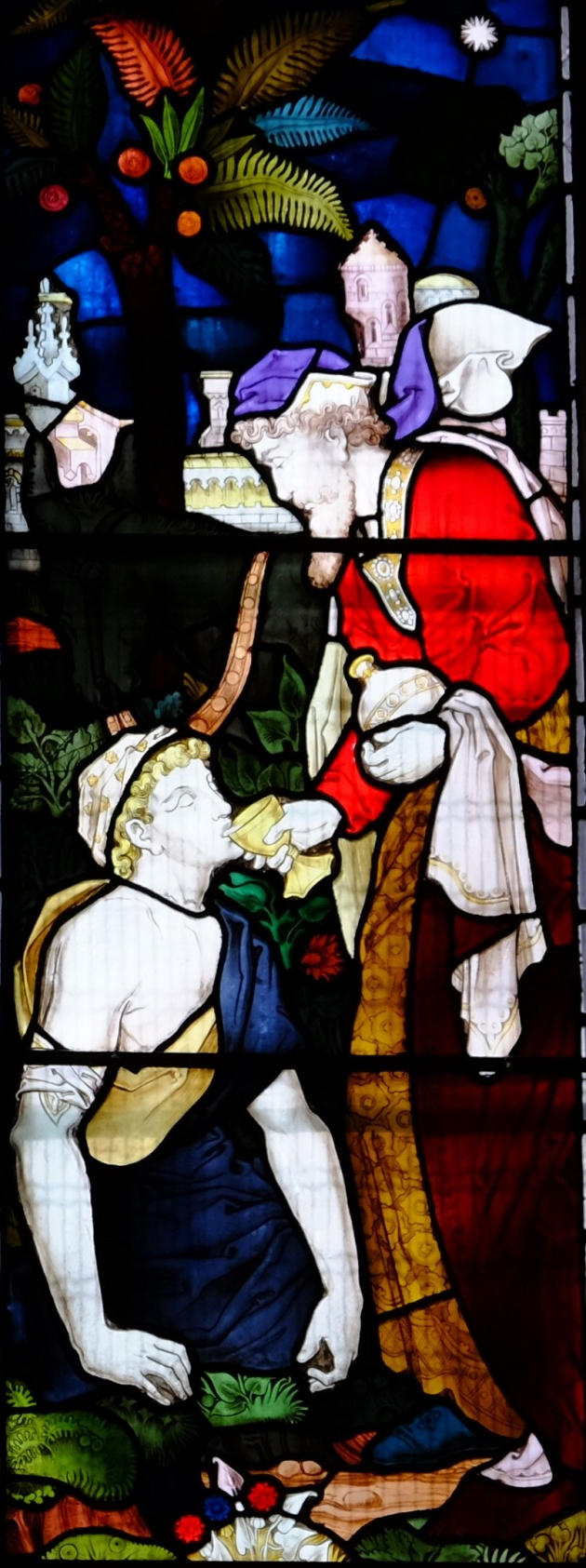
12. South Aisle: This window portrays women in the ministry of Jesus:
- A woman in the crowd seeking healing touches Jesus’s cloak.
- In the household of Mary and Martha, Mary listens to Jesus teaching, whilst Martha continues her chores.
- A woman anoints Jesus with precious perfume, as Judas Iscariot looks on.
Dated c.1871, the window script states, “She hath wrought a good work upon me/Mary hath chosen that good part.”
The window is dedicated “in memory/of George Brownless of New Broomielaw/ob.1871 and Catherine his wife ob.1866”.
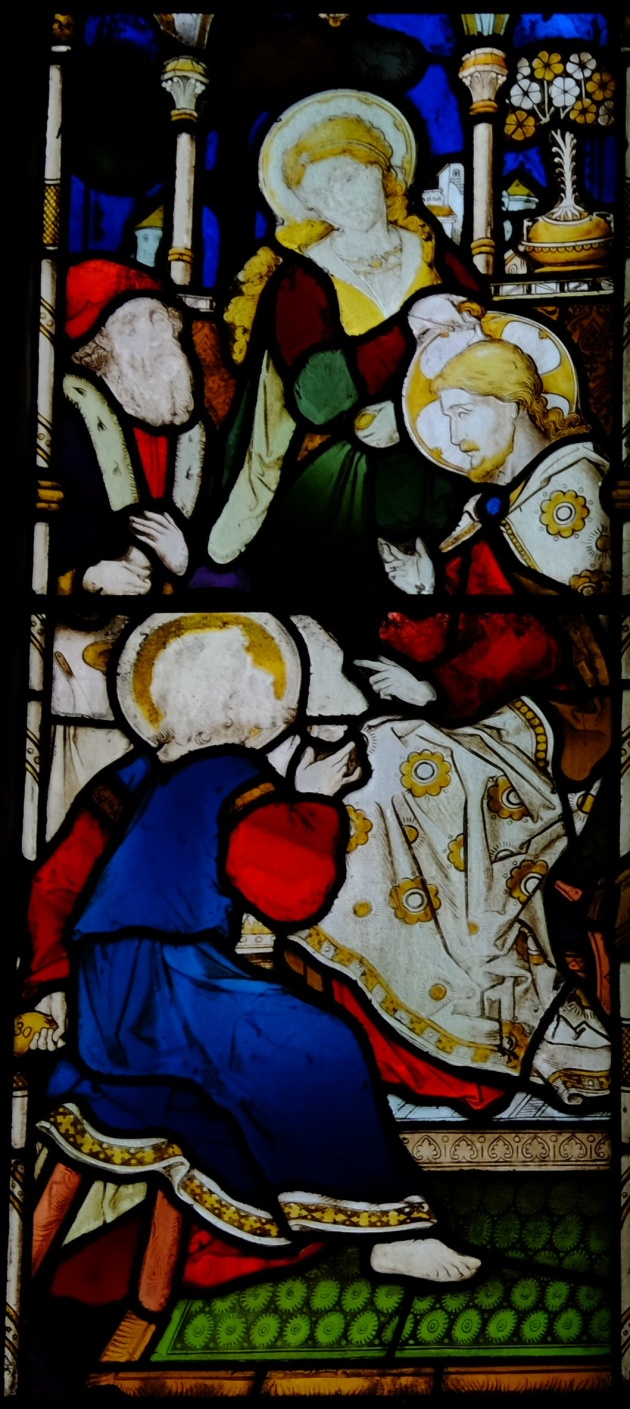
13. South Aisle (SW corner): since this area was occupied by schoolchildren’s benches prior to the 1870 re-ordering, this stained glass was known as the “Children’s Window”, and shows Jesus delivering the ‘Sermon on the Mount’ in a landscape.
It was installed in Dec 1892 and is dedicated “in loving memory of/Thompson Richardson who was born Dec/17th 1804 and died October24th 1890”. Thompson Richardson was superintendent on the town Board of Health, benefactor of the North Eastern County School and National Schools, and lawyer-clerk to the town magistrates for 50 years. His son Robert donated the family home, the ‘Starlings’ on John Street, to be the town’s Richardson Hospital.
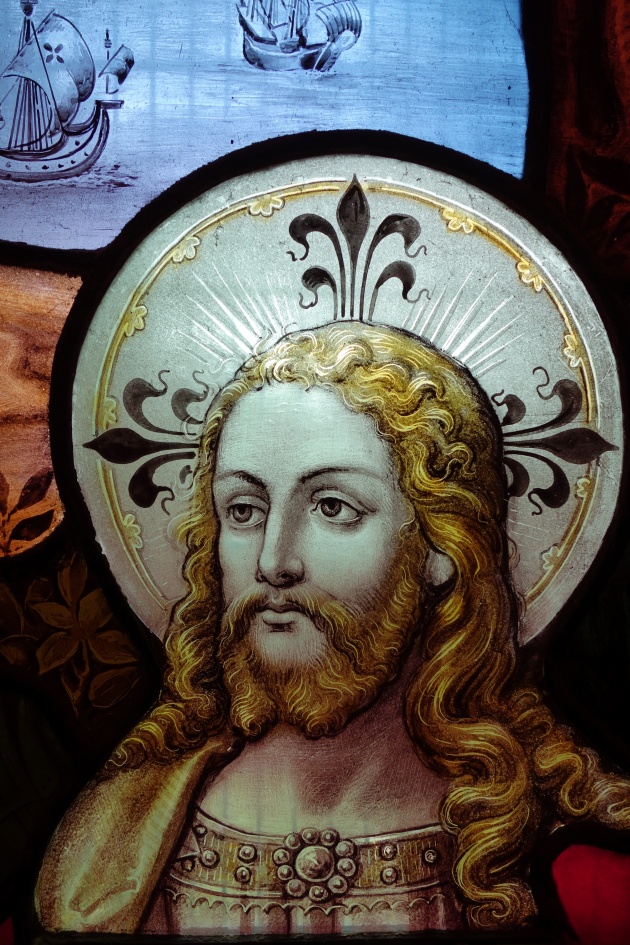
14. West Window: Installed at the closing of the West Door in 1870, this window portrays military themes in the Bible:
- Upper left – a Roman centurion asks Jesus to heal his slave.
- Upper right – an angel speaks to a centurion (Acts 10) telling him to find the apostle Peter.
- Lower left – Moses, Miriam dancing with her tambourine, and the struggles of the Egyptian army crossing the Red Sea
- Lower right – Joshua and Israelites crossing the Jordan river, carrying the Ark of the Covenant into the Promised Land.
A floating scroll above the figure of Miriam, Moses’ sister, reads, “Sing ye to the Lord for he hath triumphed gloriously”.
Designed by Wailes & Strang, the window was given in memory of “William Maude, Lieutenant-Colonel of Durham Fusiliers d. 7th Dec 1876”.
